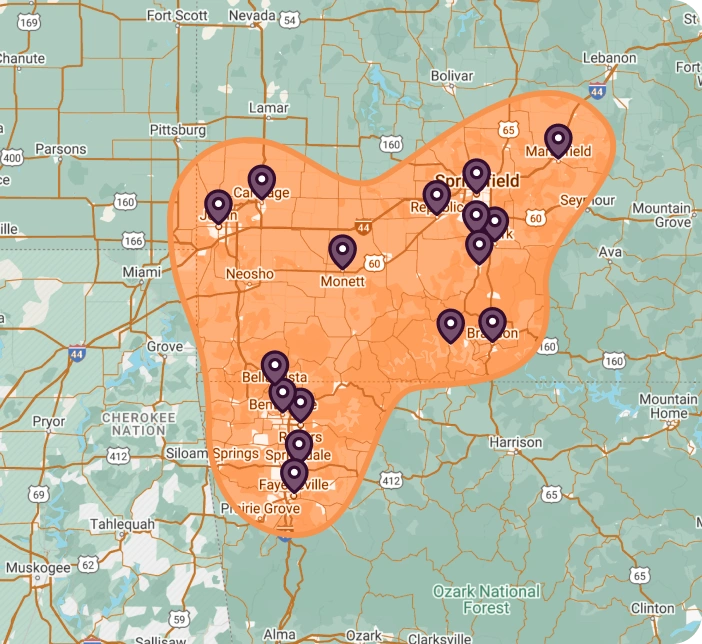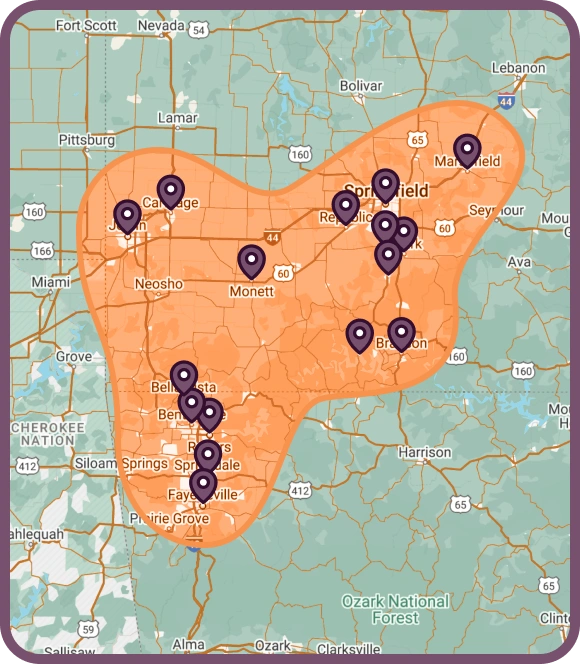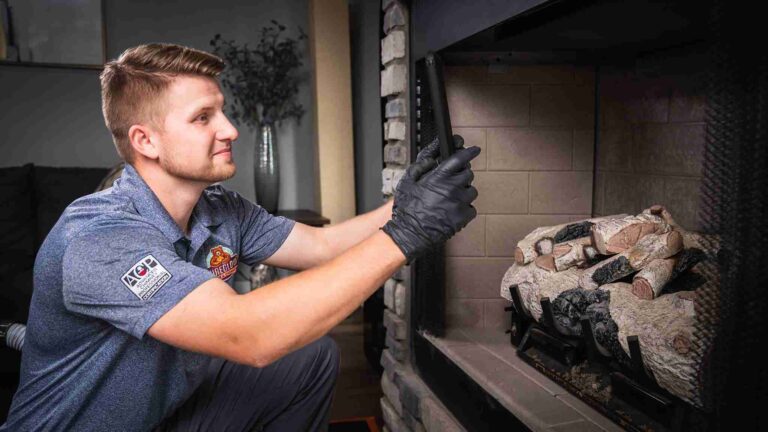What you get from SureGlow Stove and Chimney – Kansas City:
- We’ll come to your home
- Analyze your new fireplace installation needs
- Present personalized solutions on what to do next
- Financing options available!
- 100% satisfaction guaranteed
Trusted by Your Neighbors Near the Cassville, MO Area
Reliable. Honest. Quality.
SureGlow Stove & Chimney.
SureGlow Stove & Chimney is here for all of your Fireplace repair needs!
- Thoroughly Vetted & Certified Gas Fireplace Professionals
- Friendly Customer Service Representatives
- Online Scheduling Available
- Reliable, On-Time Service
- The Local’s Choice for Chimney & Fireplace Services
- Home Of The Forever Warranty

3 YEAR MEMBERSHIP
SureGlow Service Plan
keep your chimney safe and ready to burn each year!
SureGlow Stove and Chimney offers a 3 Year Service Plan that provides you with an annual sweep and inspection at a highly discounted rate and keeps you locked into that rate for all 3 years.

Check Out Our Other Offers In Cassville, MO


WHERE WE SERVE
we get the job done in southwest Missouri & northwest Arkansas
SureGlow provides top notch Chimney and Fireplace Services in these cities & more!
- Springfield, MO
- Branson, MO
- Joplin, MO
- Republic, MO
- Ozark, MO
- Nixa, MO
- Kimberling City, MO
- Carthage, MO
- Highlandville, MO
- Marshfield, MO
- Rogers, AR
- Bentonville, AR
- Bella Vista, AR
- Springdale, AR
- Fayetteville, AR
More Fireplace services offered in Cassville, MO
No matter what Fireplace issue you are facing, you can rest assured knowing that our team offers a full range of Fireplace services, including:
we offer financing options to Suit your needs
Frequently Asked Questions About Gas Fireplace repair
The cost to install or replace a gas fireplace will vary depending on a variety of factors, including the location of the install and gas line routing, amongst other specifications. For a competitive, upfront cost estimate on your fireplace installation or replacement, call us at (417) 582-7853 today!
Yes, just like wood-burning fireplaces, gas fireplaces also give off heat, and are often more energy efficient in doing so. If you’re interested in installing a fireplace in your Cassville, MO home, call your local experts at (417) 582-7853.
Installing a gas fireplace is an advanced endeavor, and is best left to an experienced professional since improper ventilation and gas line placement can create serious health risks. Trust the experienced team at SureGlow Stove & Chimney to provide safe and efficient gas fireplace installation services in Cassville, MO.
Gas fireplaces are known for their convenience and reliability, but like any appliance, they can sometimes experience issues. You can easily do some troubleshooting on your own, but if problems persist past these simple fixes, don’t hesitate to call us in
- Check the remote control or wall switch: Replace the batteries or inspect the wiring to see if the switch is functioning properly.
- Check the gas supply: Ensure the gas valve is fully open and supplying fuel to the unit.
- Relight the pilot light: Follow the manufacturer’s instructions to safely relight it.
- Inspect the thermocouple and thermopile: These components generate the voltage needed to keep the gas valve open. If they are dirty, clean them with a soft brush or cloth. If they are faulty, they may need replacement.
- Ensure the thermocouple is in place: The tip should be in direct contact with the pilot flame. If it’s out of position, gently adjust it.
- Clean the thermocouple: Use a fine-grit sandpaper or steel wool to remove any carbon buildup.
- Check for gas flow issues: If other gas appliances in the home are also having issues, you may need to contact your gas provider.
- Clear any obstructions in the pilot tube: Use compressed air to remove dust or debris blocking the gas flow.
- Clean the burner ports: Use a soft brush or compressed air to remove dirt or dust buildup.
- Adjust the air shutter: A flame that is mostly yellow may indicate too much air, while a small, weak flame may indicate too little air. Adjust the air shutter according to the manufacturer’s recommendations.
- Check gas pressure: If you suspect low gas pressure, contact a professional technician to inspect the system.
- Adjust the air shutter: More air may be needed for cleaner combustion.
- Rearrange the logs: If logs are blocking the burner ports, they can disrupt the flame pattern and produce soot. Always follow the manufacturer’s placement guide.
- Clean the burner ports: Clear away any obstructions to ensure a proper burn.
- Shut off the gas: If you smell gas, shut off the gas supply immediately, open windows, and leave the home. Call your gas provider or emergency services.
- If it’s a burning dust smell, give it time: This is common if the fireplace hasn’t been used in a while. Let it burn for 30 minutes while ventilating the room.
- Check for overheating: If the unit has a built-in safety switch, it may shut off to prevent excessive heat. Ensure proper ventilation around the fireplace.
- Test the thermopile and thermocouple: If these components aren’t generating enough power, the system may shut off unexpectedly. Cleaning or replacing them may help.

